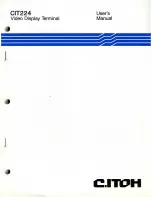
Model 202 Ozone Monitor Manual Rev. J-4
40
4. The data points will appear in a graph window in the middle of the screen.
5. Adjust the zoom level by pressing the + or
– buttons under the
Settings
button
(upper right side of screen).
6. Adjust the Y scale or set the
Auto Range
feature by pressing the
Settings
button
a. Check the
Auto Range
box to use autoscaling.
b. Uncheck the
Auto Range
box to manually set Y max and Y min for the Data 1
and Data 2 fields.
The Buffer Tab
•
Selecting the Buffer tab brings up a buffer window, similar to Tera Term or
HyperTerminal, where all data from the serial port are displayed.
•
From this tab, the user can also send commands through the serial port by typing
on the keyboard. This is only applicable if the device that is connected accepts
serial commands. See the instrument manual for a list of the serial commands.
•
This buffer window can also be used for troubleshooting for instances when: the
baud rate, device, or serial port is unknown. For example, if the status bar in the
“Instrument Data Capture area states “Receiving…” and no data appear in the
Data Grid or the Charts, click on the Buffer tab to view the serial data. If the
correct device is not selected, no data will be displayed in the Data Grid or the
Charts, but data will be displayed in the Buffer window.
Saving Data
Saving Data to a .txt File
1. Click the
Start
button in the Instrument Data Section to begin collecting data from
the instrument.
2. A window will pop up to prompt for the name and location of the file.
3. Click Save to begin the data collection.
4. All data read from the monitor through the COM port are written to the .txt file in
real time until
Stop
is clicked.
Saving Data to a .CSV or an Excel File
NOTE: Weather data are NOT saved to the .txt file. In order to save weather data, be
sure to save a .CSV file after
Stop
is clicked.
1. After collecting data, click the
Stop
button in the Instrument Data Capture Section
on the main screen.
2. A window will pop up to ask you if you would like to save to a CSV file as well.
Click
Yes
.
3. A default name appears from the date and time of the data capture. You may
change the name and path of the file if you wish.
4. Click on the
Save
button.
Opening Files
1. To open a file, click
Open
from the
File
menu.
2. Navigate to the folder where the file was stored.
3. Select either the .txt file or the excel file and press
Open
.


































